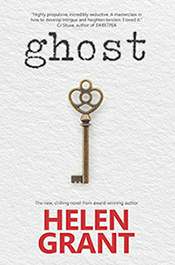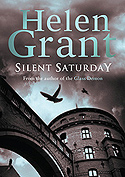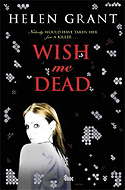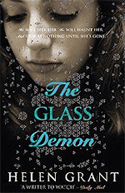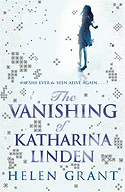Monday, April 23, 2012
Why I love visiting old churches!
This week I was down in Gloucestershire and whilst I was there I visited another couple of old churches: St. John the Baptist in Cirencester, and Gloucester Cathedral. I was loading all the photographs onto my personal Facebook page when I realised that rather a lot of my recent photo albums have featured churches. It's getting to be a bit of an obsession! There are so many photographs, in fact, that I have started a FB page especially for them, which is open to anyone. You can see (and hopefully "like") it here: http://www.facebook.com/ChurchesIHaveVisited
I've got photographs of the ruins of Blackford church, St.Nicholas' church in Ghent and Steinfeld Abbey in Germany, amongst others, and I hope to add to them in the future.
So where did this interest come from? It does not originate from religious fervour, although I am an occasional churchgoer. It partly originated from my researches into the Steinfeld stained glass; I have written about that several times for the small press literary journal The M.R.James Ghosts & Scholars Newsletter, and the real-life history of that magnificent glass was the inspiration for my second novel, The Glass Demon. Before I researched the Steinfeld windows, I had never really taken a particular interest in stained glass, but I began to look out for mediaeval glass after that, and soon realised how very little of it survives, thanks to the iconoclasts. I have lost count of the number of mediaeval churches I have visited, where nothing remains of the original glass. I grieve when it has been replaced with plain glass, because it becomes so much more difficult to imagine the architect's whole vision. When I come across a church which has some really old glass, such as the fabulous parish church of Fairford (pictured), I feel thrilled. I have gone from taking a passing interest to searching out these rare treasures!
It's not just about the stained glass, though. I have a particular liking for very old (Gothic, Norman or Romanesque) churches. I am not fond of Baroque churches, many of which give me the downright creeps! I'm not all that fond of Victorian churches either (too recent). What fascinates me is a really old church - a church whose foundation stone was laid perhaps 600 or 700 or even 1000 years ago. When you think about it, very few buildings survive from such a distant past. There are manor houses and castles, which are also very interesting, but they were the domain of the very rich. A church was a public building, attended by rich and poor - indeed, funded by the rich (whose memorials are everywhere) and built by the poor. Enter the crypt of Gloucester Cathedral and you can see pillars carved by Saxon stonemasons! Climbing the stone stairs to the tribune gallery in the same cathedral is also exciting; you have very much the sense of what it must have been like bustling about in a great mediaeval building (and the views down into the nave are fabulous, if somewhat vertiginous).
I'm fascinated by the way you can see history, not just of events, but of ways of thinking, in the changes that a church has undergone over the years. Stained glass was smashed and interior decoration stripped from many churches during the Reformation. Most churches no longer have a rood screen, though occasionally you can see one, or spot the remains of one (I spotted vestiges in St. John's Kirk in Perth during a concert recently). Strange to think that much of the celebration of the mass was once hidden from the view of ordinary churchgoers!
Later on, Baroque interiors were grafted onto Gothic architecture - a notable example being St. Bavo's cathedral in Ghent (Flanders) - I'm sure someone thought those black and white decorations were really cutting edge back in the 17th century; personally I think they are horrible! Just as bad are the 18th and 19th century wooden galleries inflicted on some Gothic churches - I am sure they seemed a wonderful idea at the time, providing seating for so many, but I can't help thinking those ancient stone walls must have heaved a sigh of relief when they were removed again!
I love to speculate on the reasons why churches grew and changed, or fell to ruin. Why did the people of Muthill elect to build a new church, rather than restoring the old parish church when it was burnt down? Why did the fabulous Fairford glass survive when so much glass was smashed to smithereens? Were there really enough lepers in Stirlingshire in centuries past to justify the insertion of "leper squints" at Fowlis Wester and Innerpeffray? If I find out, I'll let you know.
Saturday, April 14, 2012
BOOK SIGNING IN CIRENCESTER!
 I'm delighted to say that I shall be doing a book signing next Saturday 21st April 2012, from 11am until 12.30pm at Octavia's Bookshop, 24 Black Jack Street, Cirencester, Gloucestershire GL7 2AA. Tel. 01285 650677
I'm delighted to say that I shall be doing a book signing next Saturday 21st April 2012, from 11am until 12.30pm at Octavia's Bookshop, 24 Black Jack Street, Cirencester, Gloucestershire GL7 2AA. Tel. 01285 650677I'm strictly there until 12.30 only because we are flying back to Edinburgh the same afternoon. If you are within striking distance of Cirencester I'd love to see you - I'll be signing books but I'm also happy to chat and answer questions!
Saturday, April 7, 2012
It's Silent Saturday!
 I've not blogged recently, thanks to two bouts of an unpleasant winter virus and the much more welcome interruption of some lovely house guests. However, today I just had to put - well, if not exactly pen to paper, fingers to keyboard. I'd like to mark a day that has a special significance for me.
I've not blogged recently, thanks to two bouts of an unpleasant winter virus and the much more welcome interruption of some lovely house guests. However, today I just had to put - well, if not exactly pen to paper, fingers to keyboard. I'd like to mark a day that has a special significance for me.The Saturday between Good Friday and Easter Sunday is known in my former home of Flanders as Stille Zaterdag ("Silent Saturday"). On Silent Saturday, no church bells are rung; Flemish children are told that the bells have flown away to Rome to collect Easter eggs from the Pope. I first heard about this tradition in 2009, when we had not long been living in Flanders. I was attending first year Dutch classes, and as well as learning the language, we learnt all about Flemish customs. The story of the bells flying away instantly intrigued me. I imagined how I would have reacted if I had been told a similar tale when I was a child. I would have been desperate to get into the bell-tower and see whether it was true or not!
The class moved on to other topics but the image stayed with me, of a little girl climbing a church tower to see whether the bells had really gone. Great oaks from little acorns grow, runs the old saw; in this case that one idea grew into a whole book, the first of a trilogy. As a child, my heroine and her friend Kris climb the tower of their local church to see whether the bells have flown away. Having satisfied their curiosity, they decide to look out of the window at the village below - and they see something truly terrible happening, the repercussions of which echo down the years to the present day.
The first book of the trilogy, aptly named Silent Saturday, will be published in 2013 by RHCB under the Bodley Head imprint.
Subscribe to:
Posts (Atom)



